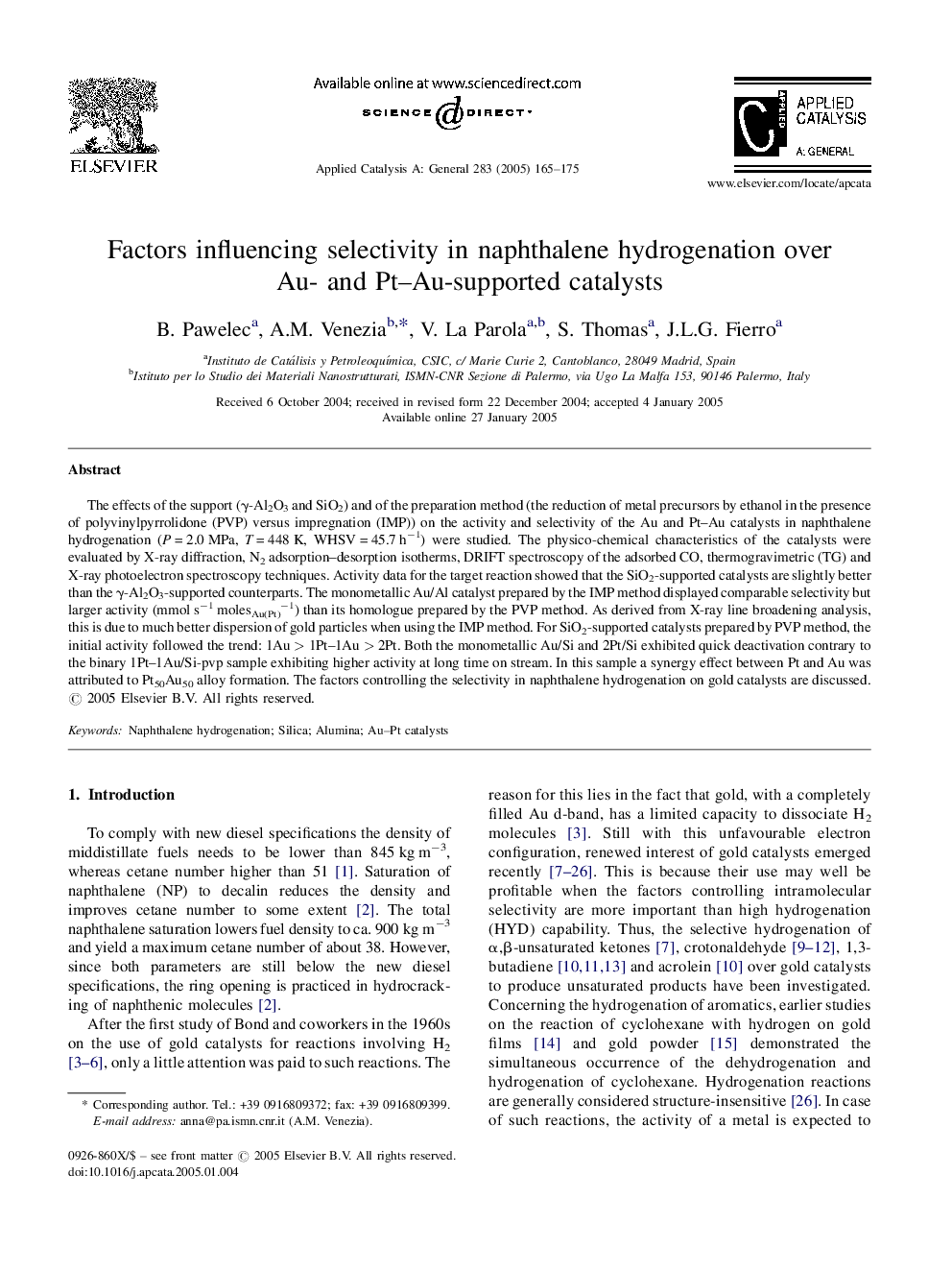| Article ID | Journal | Published Year | Pages | File Type |
|---|---|---|---|---|
| 9608017 | Applied Catalysis A: General | 2005 | 11 Pages |
Abstract
The effects of the support (γ-Al2O3 and SiO2) and of the preparation method (the reduction of metal precursors by ethanol in the presence of polyvinylpyrrolidone (PVP) versus impregnation (IMP)) on the activity and selectivity of the Au and Pt-Au catalysts in naphthalene hydrogenation (P = 2.0 MPa, T = 448 K, WHSV = 45.7 hâ1) were studied. The physico-chemical characteristics of the catalysts were evaluated by X-ray diffraction, N2 adsorption-desorption isotherms, DRIFT spectroscopy of the adsorbed CO, thermogravimetric (TG) and X-ray photoelectron spectroscopy techniques. Activity data for the target reaction showed that the SiO2-supported catalysts are slightly better than the γ-Al2O3-supported counterparts. The monometallic Au/Al catalyst prepared by the IMP method displayed comparable selectivity but larger activity (mmol sâ1 molesAu(Pt)â1) than its homologue prepared by the PVP method. As derived from X-ray line broadening analysis, this is due to much better dispersion of gold particles when using the IMP method. For SiO2-supported catalysts prepared by PVP method, the initial activity followed the trend: 1Au > 1Pt-1Au > 2Pt. Both the monometallic Au/Si and 2Pt/Si exhibited quick deactivation contrary to the binary 1Pt-1Au/Si-pvp sample exhibiting higher activity at long time on stream. In this sample a synergy effect between Pt and Au was attributed to Pt50Au50 alloy formation. The factors controlling the selectivity in naphthalene hydrogenation on gold catalysts are discussed.
Related Topics
Physical Sciences and Engineering
Chemical Engineering
Catalysis
Authors
B. Pawelec, A.M. Venezia, V. La Parola, S. Thomas, J.L.G. Fierro,
